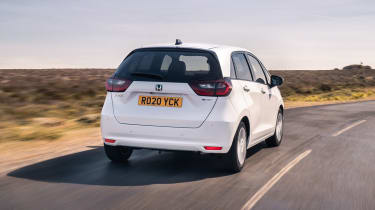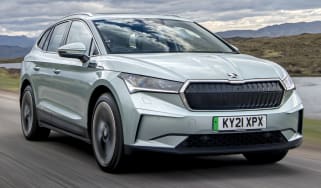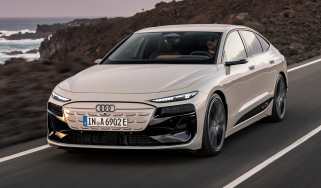Honda Jazz hybrid review
The now hybrid-only Honda Jazz is technologically impressive, very efficient and practical – but not much fun to drive
Pros
- Refinement
- Practicality
- Efficiency
Cons
- High prices
- Choppy ride
- Rivals better to drive
| Car type | Fuel economy | CO2 emissions | 0-62mph |
|---|---|---|---|
| Hybrid | 59-63mpg | 102-109g/km | 9.4-9.7s |
The Honda Jazz has been recognised as a great all-round supermini since its introduction in 2001. But while the Jazz has remained a big-selling success for the Japanese brand, it has traditionally fallen short of those at the top of the class, such as the Toyota Yaris and Vauxhall Corsa. Despite its reputation for reliability and intelligent packaging, it frequently lags behind rivals when it comes to ride, handling and value for money: So can this new generation of the Jazz do better?
With this new Jazz, Honda has retained the key elements which made it so popular with buyers in the past: a high roofline, flexible seating and simple, unpretentious styling feature here. However, some improvements have been made in key areas in an effort to bring the Jazz up to date in order to appeal to a younger audience.
The new car is still recognisable as a Jazz, though, albeit with a slicker, more modern appearance. Its MPV-like proportions betray a form-over-function approach, with simple, rounded lines replacing the old car’s more angular features; a more rugged Crosstar adds fashionable SUV-like cladding and raised suspension. Inside, there’s a redesigned interior built solidly from uninteresting, hard-wearing plastics, plus much-improved infotainment.
The most significant changes are under the metal, however. The latest-generation Jazz is exclusively powered by Honda’s new e:HEV drivetrain, which consists of a 1.5-litre petrol engine and a pair of electric motors. It’s a sophisticated system that’s very well implemented – just as you’d expect from the engineering powerhouse that is Honda.
Power is fed to the front wheels via a CVT gearbox with welcome steps in its delivery to help address some of the usual criticisms of the technology. The result – achieved via three driving modes – is refined, efficient propulsion that’s perfectly suited to a car of this type. It’s not especially quick or engaging to drive, but that’s not the point of the Jazz.
Instead, it’s sensible transport that promises very low running costs thanks to some clever technology. We were disappointed to find that the impressive mechanicals aren’t matched by the car’s chassis, however: the ride is a little choppy and there’s not the same level of poise you’d find in a Ford Fiesta, for example.
There are a lot of cheaper superminis on the market – albeit without clever hybrid power. The nearest rivals to the £26,000 Jazz – which climbs into the high twenties in high-spec and Crosstar guise – are the Renault Clio E-TECH Hybrid, Toyota Yaris and Mazda 2 Hybrid, the only other hybrid superminis on the market. All three give the Jazz a run for its money, with the hybrid version of the Renault strengthening the Clio’s grip on the supermini market, while the Yaris offers superb fuel economy and a long list of standard equipment on mid-range models. The Mazda 2 Hybrid is essentially a rebadged version of the Yaris.
The Jazz is a great choice for those who prioritise space, flexibility and efficiency above all else in a small car – which is why we’ve featured it on our list of the best hybrid hatchbacks. If you want to have some fun behind the wheel, however, you can get a lot of value for money by abandoning hybrid power altogether and picking a rival from Ford, Peugeot or Vauxhall. For a more detailed look at the Honda Jazz, read on for the rest of our in-depth review...




